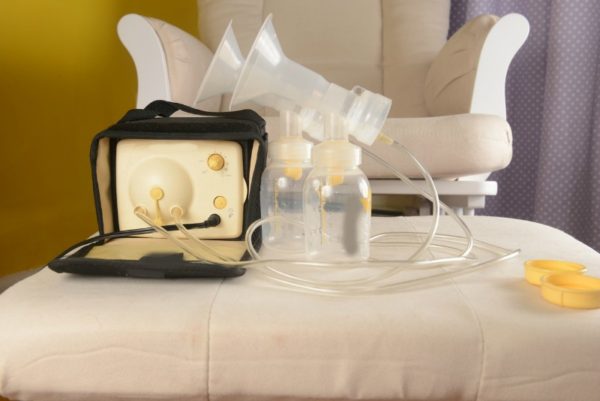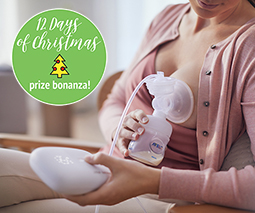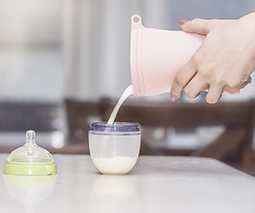Everything breastfeeding mums need to know before they return to work

Weaning your baby before returning to work is so much more than simply reducing their breastfeeds and introducing bottle feeds and solids. It’s about how both the mother and baby cope with separation during the day (or night for nurses and shift workers!) and the practicalities of putting your treasured one in the care of others for 8+ hours a day.
There are many options for how to partially or fully wean your baby, and keep expressing breastmilk while at work, so it’s worth considering your options carefully and choosing what feels right for your unique situation.
1. Partially weaning your baby
Many mothers choose to partially wean their baby before they go back to work, particularly if the baby is less than 6 months old. This could mean transitioning some of their breastfeeds to expressed breast milk (EBM) in a bottle or sippy cup and then breastfeeding in the morning before you leave and at night.
Many mothers find EBM is their preferred choice for the baby when they’re at work because it helps keep their milk supply up. On the other hand, some mothers find they can stop expressing altogether during the work day and still have enough to feed their babies at night (essentially partially-weaning). If you have a strong milk supply, you could choose a hybrid option, where you breastfeed the baby morning and night, and then the carer feeds her formula during the day.
If your baby has started solids, chances are they will already be breastfeeding less during the day. If your baby is over one, you can introduce cows milk (or a non-dairy substitute like almond milk if there is a dairy intolerance) in a sippy cup during the day, and then choose to keep breastfeeding at night.
Note: for babies that don’t like the bottle, mixing EBM through rice cereal or baby puree can be a way to give them breastmilk when you’re not there.
2. Fully weaning your baby
If you prefer, you can work at weaning your baby off breastmilk altogether and replacing that with formula before your first day back.
Many mums find that fully weaning their baby off breastmilk can make the transition to going back to work and being separated from their baby during the day harder. If you have a clingy baby or one who really loves breastfeeds and cuddles, you could try partial weaning with EBM in a bottle, and after a few months back at work, slowly taper off the bottle feeds and replace with formula (if under 12 months) or cows milk (one year and over).

3. Expressing at work
The Australian Breastfeeding Association recommends you speak to your boss about the availability of private facilities to express at work at least two months before you return. You have the right to breastfeed, express and store EBM at work. It is against the law for your employer to discriminate against you by refusing to provide suitable facilities for expressing, but the onus is on the mother to negotiate these terms with her boss.
We recommend you:
– speak to your boss about a private breastfeeding room
– discuss whether you can structure your lunch break to be flexible around when you need to express, or split it into two shorter breaks
– ask for the requirements you need:
- a private area (not the toilet) with a comfortable chair
- a power point close to a low table, next to the chair (if you’re using an electric breast pump)
- a clean refrigerator for storing expressed breastmilk
If you need to express more than once a day at work, you could get to work early and do it first thing, or otherwise negotiate to work a longer day with more regular unpaid breaks (ie. 15 minutes every 3 hours).
4. Preparing before you return to work
Many mothers find it helpful to start expressing excess breast milk and freezing in the months leading up to their part-time or full-time return to work. Every woman’s milk supply is different, so it’s wise to build up a ‘backup stash’ so you’re not caught out with no EBM to give the carer or day care centre.
- Make sure you have a coolbag/esky and ice packs ready to take with you, as well as sterilised bottles and sealed storage containers.
- Bring labels and markers to mark the milk bottles so they’re not accidentally thrown away by cleaning staff. You could even bring a labelled Tupperware container to put a few bottles in and prevent them from being knocked over.
- If the fridge at your work is cluttered and dirty you may prefer to take the milk home with you at the end of each day in the coolbag.
The Australian Breastfeeding Association website says breastmilk can be stored in the refrigerator for a maximum of 72 hours (3 days), so make sure you take the EBM home regularly.
5. How to express when you’re away from your baby
The let-down reflex that creates the flow of milk is triggered by a hormonal response from listening to, holding and looking at your baby. This feeling can be a little harder to replicate when your baby isn’t with you, but it is achievable.
We recommend finding a quiet place where you can relax, and putting on some soothing music. A photo or video of your baby may help you visualise them and help start the let-down reflex. Holding a blanket or piece of clothing that smells like them may help too.

Whether you decide to partially wean or fully wean your baby, there are more rights for women returning to work than any other time in history. The Australian Government has a handy PDF guide to the rights of working parents, so read up and make sure you’re prepared well before you re-enter the workplace, and go in confidently, knowing you’re pretty much superwoman!
How did you manage breastfeeding or weaning your baby and returning to work? We’d love to hear your experience – share on Facebook.









